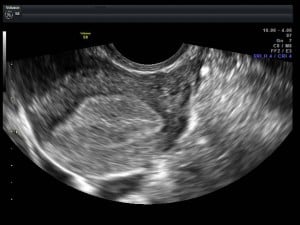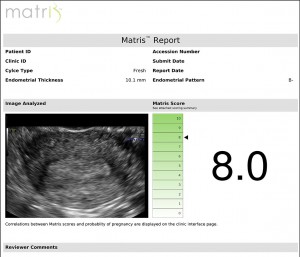The endometrium is the site of embryo implantation and its receptivity is critical to a successful outcome. The microstructure of the endometrium changes and evolves constantly in response to the reproductive hormones in circulation.
The problem that every clinician faces is assessing if the endometrium is receptive to implantation. Conventional ultrasonography alone is not able to provide that information.
The receptivity of the endometrium is affected by a number of factors. The microstructure of the endometrial glands, the endometrial thickness, the peri-glandular edema and their intra-relationships are just a few of these factors. The endometrium must be "just right" for implantation to occur.
Matris™ is an image analysis process for assessing endometrial morphology that provides a predictive index of the probability of pregnancy in ART cycles. Matris™ scores are derived from ultrasonographic images of the endometrium taken at the time of oocyte retrieval or other clinically important time-points. Matris™ uses proprietary algorithms and specialized technologies to assess and interpret ultrasonographic images taken by the clinic. Using 2- and 3-dimensional techniques, Matris™ and our team generate insights into endometrial receptivity that cannot be detected in routine clinical practice. Matris™ uses a scoring system that assigns a numeric score based on what research predicts will be the quality of the endometrial lining at the time of transfer. The higher the Matris™ score, the higher the probability of pregnancy.
Matris™ scores are provided to the ART clinician within 48 hours allowing the clinician to then use the information to enhance their decision-making process regarding transfer of an embryo or blastocyst or, alternatively, to cryopreserve and transfer in a subsequent cycle.
Images can be uploaded through our secure clinic portal 24 hours a day, 7 days a week.


